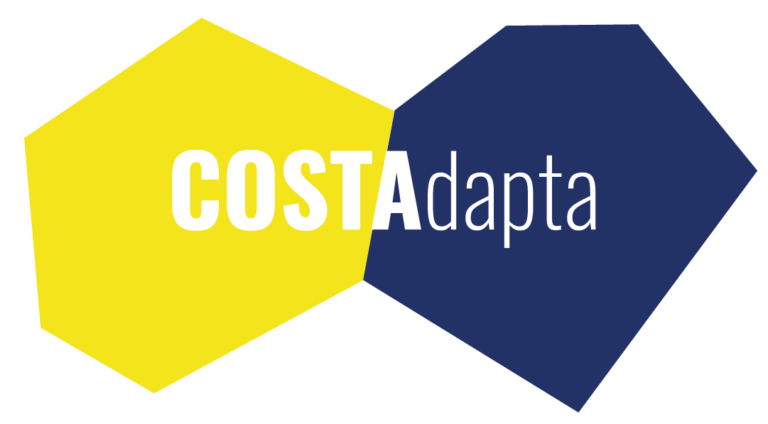A few days ago, we analysed the causes of coastal erosion, a phenomenon that endangers many beaches in the Canary Islands. Today, we are going to analyse its consequences, which affect both the environment and human communities. These consequences can be economic, social and ecological.
Coastal erosion is a natural process by which coasts lose sediments and rocks due to the action of waves, currents and wind. The main consequences of coastal erosion are:
Economic Consequences
- Loss of Property and Infrastructure:
o Destruction of Buildings: Houses, hotels, and other buildings located near the coast may be damaged or destroyed.
o Damage to Infrastructure: Roads, bridges, sewage systems and other essential infrastructure may suffer costly damage. - Impact on Tourism:
o Reduction of Beaches: Erosion can reduce the size of beaches, affecting the main tourist attraction in many coastal areas.
o Loss of Tourist Attractions: Natural monuments and other attractions may be eroded or damaged. - Impact on the Local Economy:
o Fishing: Erosion can alter marine habitats, affecting fishing productivity.
o Coastal agriculture: Agricultural land near the coast may be inundated by seawater, affecting production.
Social Consequences - Displacement of Communities:
Forced Relocation: Coastal communities may be forced to relocate due to loss of land and risk of flooding.
Impact on Housing: Loss of coastal property may leave people homeless and without livelihoods. - Loss of Cultural Heritage:
Archaeological and Cultural Sites: Erosion can destroy historical and cultural sites located near the coast.
Community Identity: Communities may lose part of their identity and cultural heritage as they are displaced. - Food Security: Communities that depend on fishing and other marine activities may see their food security compromised due to the degradation of marine ecosystems.
Ecological Consequences - Destruction of Natural Habitats:
Marine Ecosystems: Erosion can damage coral reefs, seagrasses and other essential marine habitats.
Coastal Vegetation: The loss of mangroves, dunes and other coastal vegetation affects numerous species that depend on these habitats. - Loss of Biodiversity:
Threatened Species: Erosion can lead to the disappearance of species that exclusively inhabit coastal areas.
Ecosystem Alteration: Changes in ecosystem structure can have knock-on effects, affecting multiple species.
Environmental Consequences - Pollution:
Runoff and Sediment: Erosion can increase the amount of sediment and pollutants reaching the sea, affecting water quality.
Salinisation Pollution: Saltwater intrusion into aquifers and agricultural land can affect drinking water supplies and agricultural productivity. - Alteration of Natural Processes:
Sedimentation Cycles: Disruption of natural sedimentation cycles may affect the formation of beaches and dunes.
Impact on Coastal Morphology: The shape and structure of the coastline can change drastically, altering the natural dynamics of the region.
3. Habitat Loss: Coastal erosion can destroy critical habitats for a variety of species, including birds, fish and other marine life. This can lead to a decrease in biodiversity and affect local ecosystems. - Ecosystem Degradation: Mangroves, salt marshes and coral reefs, which protect coastlines and provide important ecological services, can be degraded or destroyed.
- Increased Water Turbidity: Erosion can increase the amount of sediment in the water, which affects water quality and can damage aquatic ecosystems.
Increased Vulnerability to Natural Disasters - Flooding: Loss of natural barriers such as dunes and mangroves can increase the vulnerability of coastal areas to flooding and storms.
- Storms and storm surges: Without the natural protection provided by beaches and other coastal ecosystems, communities may be more vulnerable to the impacts of storms and storm surges.
Coastal erosion has multiple and serious consequences that affect both the environment and human communities. It is crucial to implement a combination of mitigation and adaptation strategies to protect coasts, preserve ecosystems and ensure the well-being of coastal communities.
Coastal erosion has multiple and serious consequences that affect both the environment and human communities. It is crucial to implement a combination of mitigation and adaptation strategies to protect coasts, preserve ecosystems and ensure the well-being of coastal communities. An example of this is proposed in the LIFE COSTAdapta project, which will address the adaptation of the coast of Gran Canaria to sea level rise through an innovative methodology. To this end, a progressive tidal pool-reef system will be designed and tested, combining traditional tidal pool construction techniques with advanced solutions.
This will contribute to the progressive adaptation of the Gran Canaria coast to climate change, crucial given the high vulnerability of the Canary Islands to climate impacts, including sea level rise. In addition to strengthening the resilience of coastal areas, LIFE COSTAdapta aims to conserve habitats characteristic of these areas and protect the local tourism economy. The project will ensure economic sustainability by providing solutions to flooding and maintaining the region’s tourist attraction, which in turn will support coastal stability.
The project, with a duration of 7 years and a total budget of 3,409,864 EUR (2,045,818 EUR subsidised by the European Union through the LIFE Programme), is coordinated by the Gran Canaria Island Energy Council (CIEGC) of the Cabildo de Gran Canaria, with the support of 7 partners: University of Las Palmas de Gran Canaria (ULPGC); University of Cantabria (UC); INGECID, Research and Project Development; Raley Estudios Costeros S. C.P.; ECOncrete AQUA; Fundación Canaria para el Reciclaje y Desarrollo Sostenible (FCR) and Fundación Finnova.


